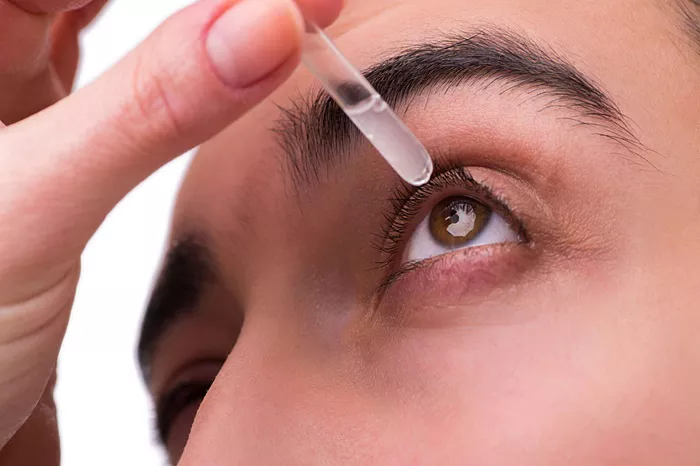In the realm of allergy management, steroid shots have emerged as a powerful tool to alleviate symptoms and improve quality of life for millions of individuals. This article aims to dissect the use of steroid shots in allergy treatment, elucidating their mechanisms of action, indications, potential side effects, and efficacy in various allergic conditions.
Understanding Allergies and Their Impact
Before delving into the specifics of steroid shots, it’s crucial to grasp the fundamentals of allergies and their profound impact on individuals’ well-being. Allergies represent an abnormal immune response to typically harmless substances, known as allergens, such as pollen, dust mites, pet dander, and certain foods. This exaggerated immune reaction triggers a cascade of symptoms ranging from mild irritation to severe anaphylaxis, significantly impairing daily functioning and diminishing overall quality of life.
The Role of Steroids in Allergy Management
Steroids, also referred to as corticosteroids or glucocorticoids, are potent anti-inflammatory agents that play a pivotal role in managing allergic diseases. Unlike anabolic steroids, which are infamous for misuse in sports, medical steroids function by suppressing the immune response and reducing inflammation, thereby alleviating allergy symptoms. While oral and nasal steroid medications are commonly prescribed for allergic conditions, steroid shots, or intralesional corticosteroid injections, offer a more targeted and rapid approach to symptom relief.
Types of Steroid Shots for Allergies
Several types of steroid shots are utilized in allergy management, each tailored to address specific allergic conditions and individual patient needs. The most commonly administered steroid shots include:
Triamcinolone Acetonide: This long-acting corticosteroid is frequently used to treat allergic rhinitis, allergic conjunctivitis, and various skin allergies such as eczema and allergic dermatitis. Triamcinolone acetonide injections exert potent anti-inflammatory effects, mitigating itching, swelling, and redness associated with allergic reactions.
Methylprednisolone: Methylprednisolone injections are employed in the management of severe allergic reactions, including anaphylaxis, angioedema, and acute exacerbations of asthma. As a rapid-acting corticosteroid, methylprednisolone swiftly suppresses systemic inflammation and prevents life-threatening complications of severe allergies.
Dexamethasone: Dexamethasone injections are renowned for their strong anti-inflammatory properties and extended duration of action. These injections are often utilized in the treatment of allergic asthma, allergic rhinitis, and allergic skin disorders, providing sustained relief from bothersome allergy symptoms.
Indications for Steroid Shots in Allergy Treatment
Steroid shots are recommended in various allergic conditions characterized by severe symptoms, inadequate response to conventional medications, or the need for rapid symptom relief. Common indications for administering steroid shots in allergy treatment include:
Acute Exacerbations: In cases of acute exacerbations of allergic conditions such as asthma or eczema, where symptoms are severe and refractory to standard therapies, steroid shots may be warranted to swiftly alleviate inflammation and prevent disease progression.
Severe Allergic Rhinitis: Individuals experiencing severe allergic rhinitis unresponsive to nasal steroid sprays or antihistamines may benefit from a course of steroid shots to alleviate nasal congestion, sneezing, and nasal discharge.
Allergic Skin Disorders: Patients with recalcitrant allergic skin disorders such as atopic dermatitis or contact dermatitis may receive steroid shots to mitigate itching, erythema, and inflammation, particularly when topical treatments yield inadequate results.
Anaphylaxis: In the event of anaphylactic reactions triggered by allergen exposure, prompt administration of steroid shots alongside epinephrine and antihistamines is essential to counteract systemic inflammation and prevent life-threatening complications.
Mechanism of Action of Steroid Shots in Allergy Treatment
Steroid shots exert their therapeutic effects by modulating various aspects of the immune response and inflammatory cascade implicated in allergic reactions. The key mechanisms of action include:
Suppression of Pro-inflammatory Cytokines: Corticosteroids inhibit the production and release of pro-inflammatory cytokines such as interleukins and tumor necrosis factor-alpha, which orchestrate the inflammatory response in allergic diseases.
Reduction of Immune Cell Activation: Steroids attenuate the activation and recruitment of immune cells, including mast cells, eosinophils, and T lymphocytes, which are pivotal in mediating allergic inflammation and tissue damage.
Stabilization of Mast Cells: Corticosteroids promote the stabilization of mast cells, preventing the release of histamine and other mediators implicated in allergic symptoms such as itching, swelling, and bronchoconstriction.
Inhibition of Eicosanoid Synthesis: Steroids inhibit the synthesis of eicosanoids, including prostaglandins and leukotrienes, which mediate vasodilation, bronchoconstriction, and mucus production in allergic reactions.
By modulating these immunological pathways, steroid shots effectively mitigate the signs and symptoms of allergies, providing rapid relief and improving patients’ overall quality of life.
Administration and Dosage of Steroid Shots
The administration of steroid shots in allergy treatment necessitates meticulous attention to dosage, injection site, and frequency to optimize therapeutic outcomes while minimizing adverse effects. The following considerations guide the safe and effective use of steroid shots:
Injection Site Selection: The choice of injection site depends on the specific allergic condition being treated. For allergic rhinitis, injections are typically administered intramuscularly in the deltoid or gluteal muscles, whereas intralesional injections are preferred for allergic skin disorders to target the affected area directly.
Dosage Titration: The dosage of steroid shots is tailored to the severity and duration of symptoms, as well as individual patient factors such as age, weight, and comorbidities. Clinicians employ a stepwise approach, initiating therapy with the lowest effective dose and titrating upwards as needed to achieve optimal symptom control.
Frequency of Administration: The frequency of steroid shot administration varies depending on the specific allergic condition and the response to treatment. While some patients may require a single injection to achieve sustained symptom relief, others may necessitate a series of injections spaced at intervals ranging from days to weeks.
Adjuvant Therapies: In conjunction with steroid shots, adjuvant therapies such as antihistamines, nasal sprays, and moisturizers may be prescribed to augment symptom relief, address comorbidities, and prevent disease recurrence.
Monitoring and Follow-up: Close monitoring of patients receiving steroid shots is imperative to assess treatment response, monitor for adverse effects, and adjust therapy as necessary. Regular follow-up appointments enable clinicians to evaluate the efficacy and safety of treatment and make informed decisions regarding ongoing management.
By adhering to these principles of administration and dosage, healthcare providers can optimize the therapeutic benefits of steroid shots while minimizing the risk of adverse effects, ensuring comprehensive and individualized care for patients with allergic conditions.
Efficacy and Clinical Outcomes
Numerous clinical studies have demonstrated the efficacy of steroid shots in alleviating symptoms and improving clinical outcomes in various allergic conditions. Key findings include:
Allergic Rhinitis: Triamcinolone acetonide injections have been shown to significantly reduce nasal congestion, rhinorrhea, and sneezing in patients with allergic rhinitis, providing rapid and sustained relief compared to placebo.
Allergic Dermatitis: In individuals with severe atopic dermatitis or contact dermatitis refractory to topical treatments, intralesional corticosteroid injections have been shown to expedite symptom resolution, reduce pruritus, and improve skin barrier function.
Asthma Exacerbations: Methylprednisolone injections, when administered promptly during acute exacerbations of asthma, have been associated with reduced hospital admissions, improved lung function, and decreased reliance on rescue medications, fostering better disease control and management.
Anaphylaxis: In cases of anaphylactic reactions, the timely administration of steroid shots alongside epinephrine and supportive therapies has been shown to attenuate systemic inflammation, prevent biphasic reactions, and improve overall survival rates.
Overall, the judicious use of steroid shots in allergy treatment yields favorable clinical outcomes, ameliorating symptoms, enhancing disease control, and enhancing patients’ quality of life.
Safety Profile and Adverse Effects
While steroid shots offer potent anti-inflammatory effects and rapid symptom relief, they are not without risks, and careful consideration of their safety profile is paramount. Common adverse effects associated with steroid shots include:
Local Reactions: Pain, erythema, and swelling at the injection site are common transient reactions following steroid shots, typically resolving spontaneously within a few days.
Systemic Effects: Systemic side effects such as transient hyperglycemia, hypertension, mood changes, and gastrointestinal disturbances may occur, particularly with high-dose or prolonged steroid therapy.
Immunosuppression: Prolonged or excessive use of steroids may predispose individuals to opportunistic infections, impaired wound healing, and reactivation of latent infections such as tuberculosis or herpes simplex virus.
Osteoporosis and Bone Fractures: Long-term corticosteroid therapy is associated with an increased risk of osteoporosis, bone mineral density loss, and consequent fractures, necessitating vigilant monitoring and preventive measures such as calcium supplementation and weight-bearing exercise.
Adrenal Suppression: Chronic steroid therapy may suppress the hypothalamic-pituitary-adrenal axis, leading to adrenal insufficiency and adrenal crisis upon abrupt cessation of treatment, underscoring the importance of gradual tapering and steroid-sparing strategies.
Despite these potential adverse effects, the overall risk-benefit ratio of steroid shots remains favorable when administered judiciously and under close medical supervision, with careful consideration of patient-specific factors and individualized treatment goals.
Conclusion
Steroid shots represent a valuable therapeutic modality in the management of allergic diseases, offering rapid and targeted symptom relief, improving disease control, and enhancing patients’ quality of life. By understanding the mechanisms of action, indications, administration principles, and safety considerations associated with steroid shots, healthcare providers can optimize treatment outcomes and provide comprehensive care for individuals with allergic conditions. Through continued research and clinical innovation, the role of steroid shots in allergy treatment continues to evolve, promising new avenues for enhanced efficacy, safety, and patient-centered care in the management of allergic diseases.
[inline_related_posts title=”You Might Be Interested In” title_align=”left” style=”list” number=”6″ align=”none” ids=”5973,5988,5971″ by=”categories” orderby=”rand” order=”DESC” hide_thumb=”no” thumb_right=”no” views=”no” date=”yes” grid_columns=”2″ post_type=”” tax=””]

































